Rich Cali won the StarCity Games Legacy Open this weekend in Syracuse piloting Izzet Delver. The Top 8 of the Open was mostly populated by Delver of Secrets deck, including two of my teammates, Harlan Firer and Austin Collins.
With the popularity of combo decks and Eldrazi Post decks in the tournament, Delver decks were a good choice because they use both Wasteland and Force of Will. I played Eldrazi Post in the main event, and while Wasteland didn’t hinder me, not registering Force of Will in my deck likely contributed to missing Day Two by a round.
So what does a Legacy Delver deck look like these days?
The Basics
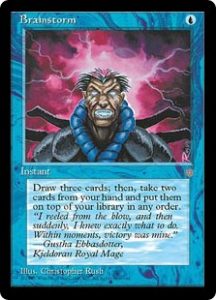
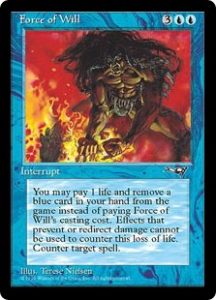
These are the two cards that entice everyone to register blue decks in Legacy. In fact, many would say that they are Legacy. Brainstorm enables players to dig through their deck to find exactly what they need in any given scenario, while also shuffling away irrelevant cards with fetchlands. Force of Will provides interaction from turn one that can stop combo decks. You can play a fair deck like Delver and do well against most combo decks because of the counterspells.
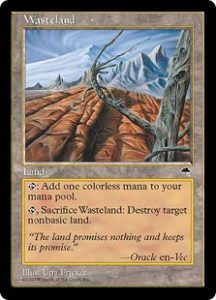
Grixis Control was popular before this weekend, but its main weakness was its inability to beat the Eldrazi Post decks that were gorwing in popularity. Grixis Control struggles to beat “Big Mana” decks without land destruction. Wasteland has historically been a staple in Delver decks, so it’s no surprise that the Delver decks have been growing in popularity recently. Wasteland gives you the ability to play a fair blue deck without the downside of automatically folding to the big mana or Chalice of the Void decks.
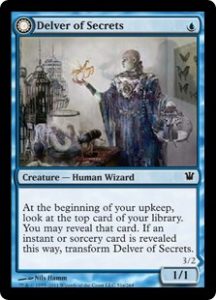
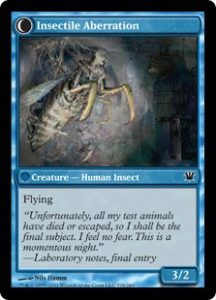
Finally, we can’t forget the deck’s namesake card: Delver of Secrets. Like the Mono-Blue deck in Standard, Delver hits the table early and gets protected by tempo spells and counter-magic while taking chunks out of your opponent’s life total. The deck is full of spells (and manipulation) so Delver is easy to flip. Force of Will and Daze provide manaless protection. Ponder and Brainstorm keep the cards flowing.
The base of cards has proven to be resilient and powerful in Legacy. But you can augment the core in a few ways.
Izzet
Izzet Delver is one of the versions that most people are familiar with.
Izzet Delver, by Austin Collins
| Creatures (13) 4 Delver of Secrets 3 Pteramander 3 Young Pyromancer 3 True-Name Nemesis Spells (29) 4 Brainstorm 4 Ponder 1 Preordain 4 Daze 4 Force of Will 3 Spell Pierce 4 Lightning Bolt 3 Chain Lightning 1 Forked Bolt 1 Vapor Snag | Lands (18) 4 Wasteland 4 Scalding Tarn 2 Flooded Strand 1 Polluted Delta 1 Wooded Foothills 2 Volcanic Island 3 Island 1 Mountain Sideboard (15) 2 Flusterstorm 3 Blood Moon 2 Electrickery 2 Surgical Extraction 3 Abrade 3 Pyroblast |
The Izzet cards include additional powerful strategies like Young Pyromancer, an additional threat that rewards casting so many cheap spells, and the ever-popular Lightning Bolt. The sideboard features two of the most powerful and feared cards in Legacy: Blood Moon and Pyroblast. It also has Abrade to answer problematic artifacts like Chalice of the Void and Ensnaring Bridge.
Izzet Delver exploits the tempo plan more than white versions, and is effective in disrupting the opponent from many angles. Plus, Blood Moon sometimes just wins the game on its own.
Azorius
The other common Delver variant uses white mana and the Stoneforge Mystic package.
Azorius Delver, by Harlan Firer
The Azorius version makes better use of True-Name Nemesis thanks to equipment like Batterskull and Umezawa’s Jitte. Swords to Plowshares does more work as a removal than Lightning Bolt, though it also slows down your clock a bit.
Overall the Azorius version is slower and happier to play longer games, which is why it has 20 lands and a two copies of Jace, the Mind Sculptor. It also gets access to the white sideboard options like Containment Priest, Celestial Purge, Council’s Judgement, and Disenchant.
Where to Go from Here
How should the Legacy metagame adapt? If we expect more Delver decks in Legacy moving forward, the decks that can rise up to fight Delver are GB Depths, Death and Taxes, or Aggro Loam. If you are looking to beat the Delver decks and have reasonable to good matchups across most of the field, I would personally start with Aggro Loam.
Four-Color Loam, by Jonathan Orr
This is likely where I’m going to start when approaching the new Legacy metagame. Then again, I might just join the Delver parade and try Harlan’s Azorius Delver list as well. I am excited to see where Legacy goes in the next couple of months, and I hope to see you all at the next Legacy tournament!
Ally Warfield is a Magic grinder and personality. She is an up-and-coming grinder with an impressive range in terms of archetype selection. You can find her on Twitter @ArcticMeebo.

